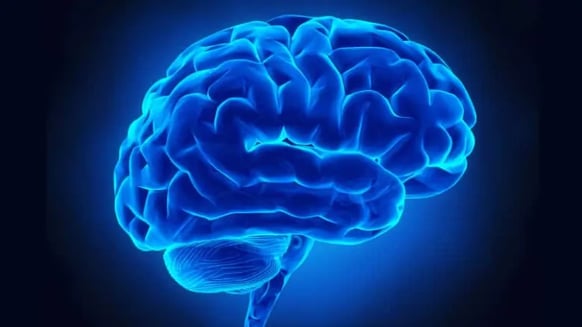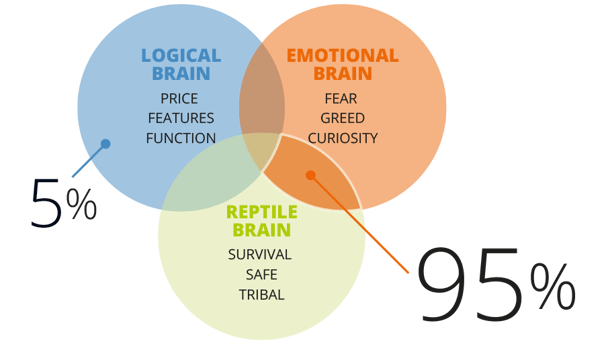Resilience and Leadership: How Neuroscience Can Help You Become A Better Arts and Culture Leader

Teams have to manage the ups and downs of each workday and of course need a leader to make those ups and downs a little less stormy. We’ve certainly all learned a lot this last year, but what struck me the most was the agility, adaptability - and of course resilience arts, culture and heritage leaders and their teams have shown.
Leading teams during times of turmoil and crisis - and leading them out of it again - can feel a bit like trying to solve a Rubik’s Cube blindfolded, with your hands tied behind your back.
But recent studies in neuroscience have shown that there are some cognitive skills you can use to help your teams through any situation.

Face The Fears: Engage Your Survival Brain
It is easy to think the best way forward when times are challenging is to become the cheerleader for your team. While positivity is most certainly important, addressing your teams insecurities and fears - whatever they are, is what helps keep teams moving forward and buoyed. It is like going scuba diving without ever having a diving lesson. If you don’t know what to do when things go wrong - they will go wrong terribly.
Helping your team engage their “survival brain” ensures they are ready for anything and won’t let their “what if” thinking take over which is a surefire way to sabotage success and stall your team. A great example of this preparedness is the work The Arts Working Group have done on toolkits. These are all about getting ready and getting prepared.
Inspiration and motivation are great - and needed - but don’t be afraid to face fears with your team - all together and individually. This will help grow confidence in your team and help them overcome obstacles together.
Get Emotional and Logical: Sooth Your Emotional Brain and Activate Your Logical Brain
When your team is dealing with challenges it is also important to remember the bigger picture. Talk to your team about their vision, goals and hopes. This engages the emotional brain and helps ease latent fears. But that of course is not all.
Research has shown that the survival brain and emotional brain are the two most decision-driven parts of the brain. People most often make decisions using either their emotional brain or their survival brain if they are overactive. So don’t forget facts, data, timelines and logistics. This activates the brain’s logical side and can help get your team thinking clearly.

Things Will Go Wrong
The reality as we all know is that s&*$ happens. Things go wrong - it is just a part of life. The difference between a leader and a follower is that leaders understand that failure is part of the journey - an inevitable part of the journey.
Your job as a leader is to help your team through it. The real trick is getting your team out of survival mode as quickly as possible. Pay attention to how your team responds to verbal and non-verbal cues. What inspires? What bores? What fills them with fear? Understanding this and responding appropriately will only help your team be stronger.
What’s really interesting is that arts and culture leaders seem to do all of these things naturally. I think that is why the arts, culture and heritage sector has been resilient and adaptable over this last year and half. And why there is so much to look forward to in the future. The arts and culture has proven they can handle uncertainty and challenges - and it most definitely is in our head.
Categories
Recent posts
Archive
- December 2025 (2)
- November 2025 (1)
- October 2025 (3)
- September 2025 (1)
- August 2025 (3)
- July 2025 (3)
- June 2025 (3)
- May 2025 (4)
- April 2025 (5)
- March 2025 (5)
- February 2025 (4)
- January 2025 (4)
- December 2024 (3)
- November 2024 (5)
- October 2024 (4)
- September 2024 (7)
- August 2024 (5)
- July 2024 (3)
- June 2024 (3)
- May 2024 (3)
- April 2024 (3)
- March 2024 (4)
- February 2024 (5)
- January 2024 (3)
- December 2023 (3)
- November 2023 (4)
- October 2023 (4)
- September 2023 (5)
- August 2023 (3)
- July 2023 (4)
- June 2023 (4)
- May 2023 (5)
- April 2023 (4)
- March 2023 (4)
- February 2023 (5)
- January 2023 (4)
- December 2022 (4)
- November 2022 (3)
- October 2022 (4)
- September 2022 (5)
- August 2022 (2)
- July 2022 (4)
- June 2022 (5)
- May 2022 (4)
- April 2022 (5)
- March 2022 (3)
- February 2022 (4)
- January 2022 (4)
- December 2021 (2)
- November 2021 (3)
- October 2021 (5)
- September 2021 (4)
- August 2021 (4)
- July 2021 (3)
- June 2021 (4)
- May 2021 (2)
- April 2021 (4)
- March 2021 (5)
- February 2021 (4)
- January 2021 (5)
- December 2020 (4)
- November 2020 (4)
- October 2020 (5)
- September 2020 (5)
- August 2020 (4)
- July 2020 (7)
- June 2020 (5)
- May 2020 (5)
- April 2020 (5)
- March 2020 (8)
- February 2020 (4)
- January 2020 (5)
- December 2019 (3)
- November 2019 (5)
- October 2019 (4)
- September 2019 (4)
- August 2019 (5)
- July 2019 (4)
- June 2019 (4)
- May 2019 (5)
- April 2019 (4)
- March 2019 (4)
- February 2019 (3)
- January 2019 (5)
- December 2018 (4)
- November 2018 (8)
- October 2018 (2)
- September 2018 (3)
- August 2018 (5)
- July 2018 (4)
- June 2018 (4)
- May 2018 (1)
- April 2018 (1)
- March 2018 (3)
- February 2018 (2)
- December 2017 (2)
- November 2017 (3)
- October 2017 (4)
- September 2017 (2)
- August 2017 (1)
- July 2017 (5)
- June 2017 (3)
- May 2017 (2)
- April 2017 (3)
- March 2017 (2)
- February 2017 (3)
- January 2017 (3)
- December 2016 (4)
- November 2016 (1)
- September 2016 (1)
- July 2016 (3)
- June 2016 (1)
- May 2016 (2)
- April 2016 (2)
- February 2016 (1)
- January 2016 (3)
- December 2015 (2)
- September 2015 (1)
- August 2015 (2)
- July 2015 (1)
- June 2015 (2)
- May 2015 (2)
- April 2015 (5)
- March 2015 (2)
- February 2015 (2)
- January 2015 (4)
- December 2014 (3)
- November 2014 (3)
- October 2014 (2)
- September 2014 (3)
- August 2014 (3)
- July 2014 (3)
- June 2014 (7)
- May 2014 (6)
- April 2014 (3)
- March 2014 (2)
- February 2014 (1)
- January 2014 (3)
- December 2013 (1)
- August 2013 (1)
- June 2013 (1)
- April 2013 (1)
Sign up for regular updates


